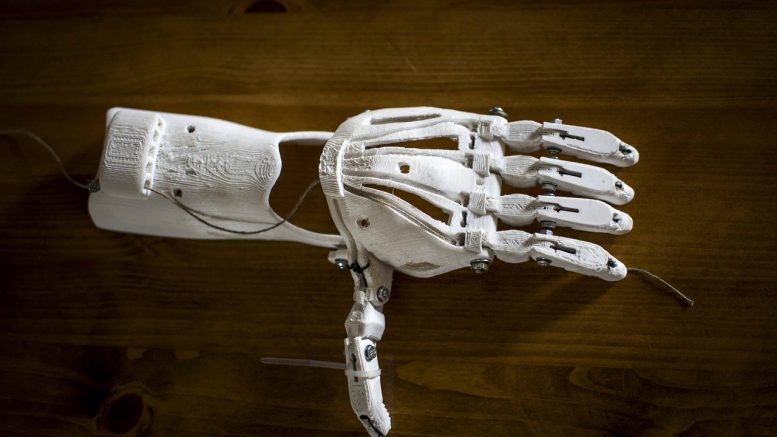di Sergio Mauri
- OPEN BIONICS AND THEIR HERO ARM.
Tonight I’m going to talk about affordable technology and people affected with disabilities, in order to understand how technology can help those people in those situations. In particular, we read about Open Bionics, a UK startup based in Bristol, and its awesome product: Hero Arm, a stylish multi-grip bionic hand. It’s an upper limb prosthesis that won, along with other products, over the last few years, several coveted awards. Founders of this useful and interesting startup are Joel Gibbard and Samantha Payne, two young people who are caught by the mission of helping people with disabilities, especially children, turning them into “bionic heroes”, as they like to say.
- PRINT YOUR OWN BODY PARTS.
As a matter of fact and relating to what I said about Open Bionics and its mission, now we have to focus on what primarily allowed the development of this kind of devices for disabled people: the 3D printing technology. This technology consists in printers that can print, by an suitable software, prosthetic limbs that are able to mimick human proper use of a natural limb, in order to relieve disabled people’s lives.
- NHIAL.
Disability problems are particularly widespread in poor countries affected with famines and/or wars. By the way, we read the story of Nhial, a former child soldier recruited by the sudanese christian faction against the muslim one, who suffered an accident on a mine being severely injured. He needed a solution for his disability that only a low-cost industry could provide. The story of Nhial is common in poorer countries where even a car accident can be a problem and where this is what daily happens in those places.
- WORLD HEALTH ORGANIZATION.
The World Health Organization estimates there are about 30 million people who require prosthetic limbs, braces or other mobility devices. In addition, there’s a shortage – in poorer countries – of 40 thousand trained prosthetists and – actually – many patients have to take on the costs of travelling to reach the place where they can be treated. Furthermore, more than 8 in 10 of people needing mobility devices cannot have them. Therefore, 3D printing is a solution, even if partial, for all the disability problems. Experts have developed 3D-printed skin for burn victims, airway splints for infants, facial reconstruction parts for cancer patients, orthopaedic implants for pensioners, customised hearing-aid shells and ear moulds as well as dental crowns and bridges.
- IVAN OWEN.
By the esperience of people like Ivan Owen, an american artist, in printing 3D body parts for children, a community called “Enabling the future” has grown in dozens of countries and accessed 2000 printers. His story is interesting: he created a simple mechanical hand for a steampunk convention and posted a video about it. His video was seen by a south african carpenter who had just lost four fingers in a circular saw accident. At the same time he started to discuss plans for a prototype prosthetic hand and came to the attention of the mother of a five year old boy called Liam who was born without fingers on his right hand. The 3D printing is even the right low-cost solution to reprint, after rescaling, the prosthesis for boy who are in the growing age. Last but not least, Owen published his work as open-source files for 3D printing.
- JORGE ZUNIGA.
Another important story to tell is Jorge Zuniga’s one. He’s a research scientist in Biomechanic Research Building at the University of Nebraska in Omaha. He developed a prosthetic model of a human hand for his son, and left open-source the files used to do this work. By this work emerged Cyborg Beast, a low-cost project to build prosthetic hands.
In this area the key for success is cross-fertilisation, putting engineers and prosthetist orthotists together. Cooperation is the way to succeed.


